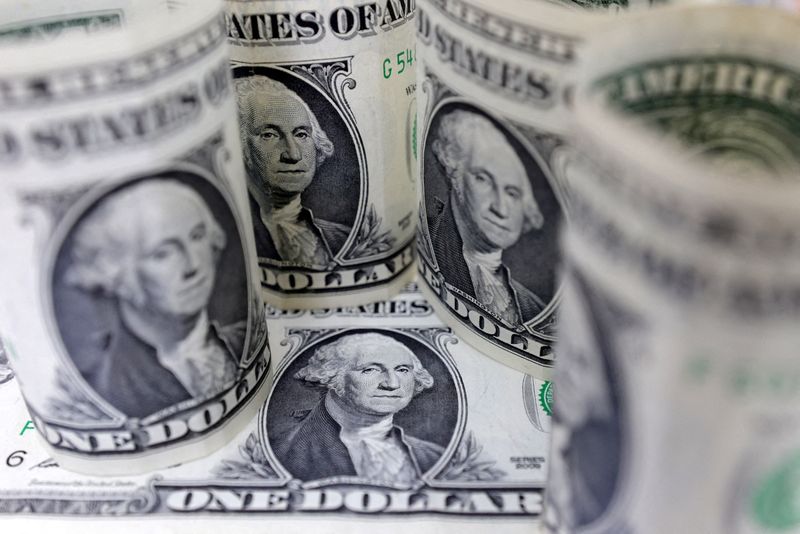Ian Withers and Gertrude Chavez-Dreyfus
LONDON/NEW YORK (Reuters) – The dollar fell in weak trade on Monday as investors focused on U.S. inflation data later this week, while the yen fell to near 34-year lows against the greenback as traders remain vigilant for any potential moves from Japan. authorities to support the weakening currency.
The U.S. dollar fluctuated last week as traders digested mixed economic data: Slower growth in the services sector was accompanied by unexpectedly strong hiring rates, prompting the market to trim bets on Federal Reserve rate cuts this year.
The index, which tracks the dollar against six other major currencies, was last down 0.2% at 104.19, while U.S. Treasury yields, which measure expectations for interest rate moves, rose.
Against the yen, the dollar strengthened 0.1% to 151.745, nearing its highest level since July 1990.
Real wages for Japanese workers fell in February for a 23rd straight month, data showed on Monday, suggesting higher prices continue to weigh on consumer appetite.
Inflation-adjusted real wages, a barometer of consumer purchasing power, fell 1.3% in February from a year earlier, data from Japan’s Labor Ministry showed. This followed a revised 1.1% decline in January.
“I think traders are testing Japanese currency officials’ resolve to keep 152 as the real resistance point,” said Helen Given, a currency trader at Monex USA in Washington.
“With real wages in Japan falling again… and given the current global risk climate, the yen’s role as a traditional safe haven has diminished recently, with investors flocking to gold and the US dollar instead.”
Japanese Prime Minister Fumio Kishida said on Friday that authorities would use “all available means” to deal with the yen’s extreme fall, underscoring Tokyo’s willingness to intervene in the market to support the currency.
Bank of Japan Governor Kazuo Ueda addressed the country’s parliament on Monday but said little about monetary policy and said he had succeeded in adopting a simpler policy framework.
Japan’s former senior currency official Takehiko Nakao told Reuters that authorities could intervene in the foreign exchange market to stop the yen’s sharp fall “at any time” if the steps were sufficient.
In the US, the focus will be on US consumer price inflation data for March, due out on Wednesday. Economists expect the headline consumer price index (CPI) to rise 0.3 month-on-month, up from 0.4 percent in February, according to a Reuters poll. Core consumer price index could also rise 0.3% in March.
Ahead of CPI data and following last Friday’s strong jobs report, the U.S. interest rate futures market lowered the odds of a June rate cut to 52.1%, down from 58% a week ago, FedWatch CME showed.

The market also lowered expectations for the number of rate cuts this year to two from three to four a few weeks ago, according to data from the LSEG Probability Rates app.
In the eurozone, currency investors will be looking ahead to the European Central Bank (ECB) policy meeting on Thursday. The euro was up 0.1% at $1.0850, while sterling was unchanged at $1.2643. The ECB’s base case is to keep rates unchanged this week and perhaps increase the possibility of a rate cut in June. But while the ECB is increasingly confident that inflation is returning to its 2% target, it remains vague on further easing. In cryptocurrencies, Bitcoin rose 6.5% to $72,063 after hitting a three-week high of 72,732.59 earlier in the session.


